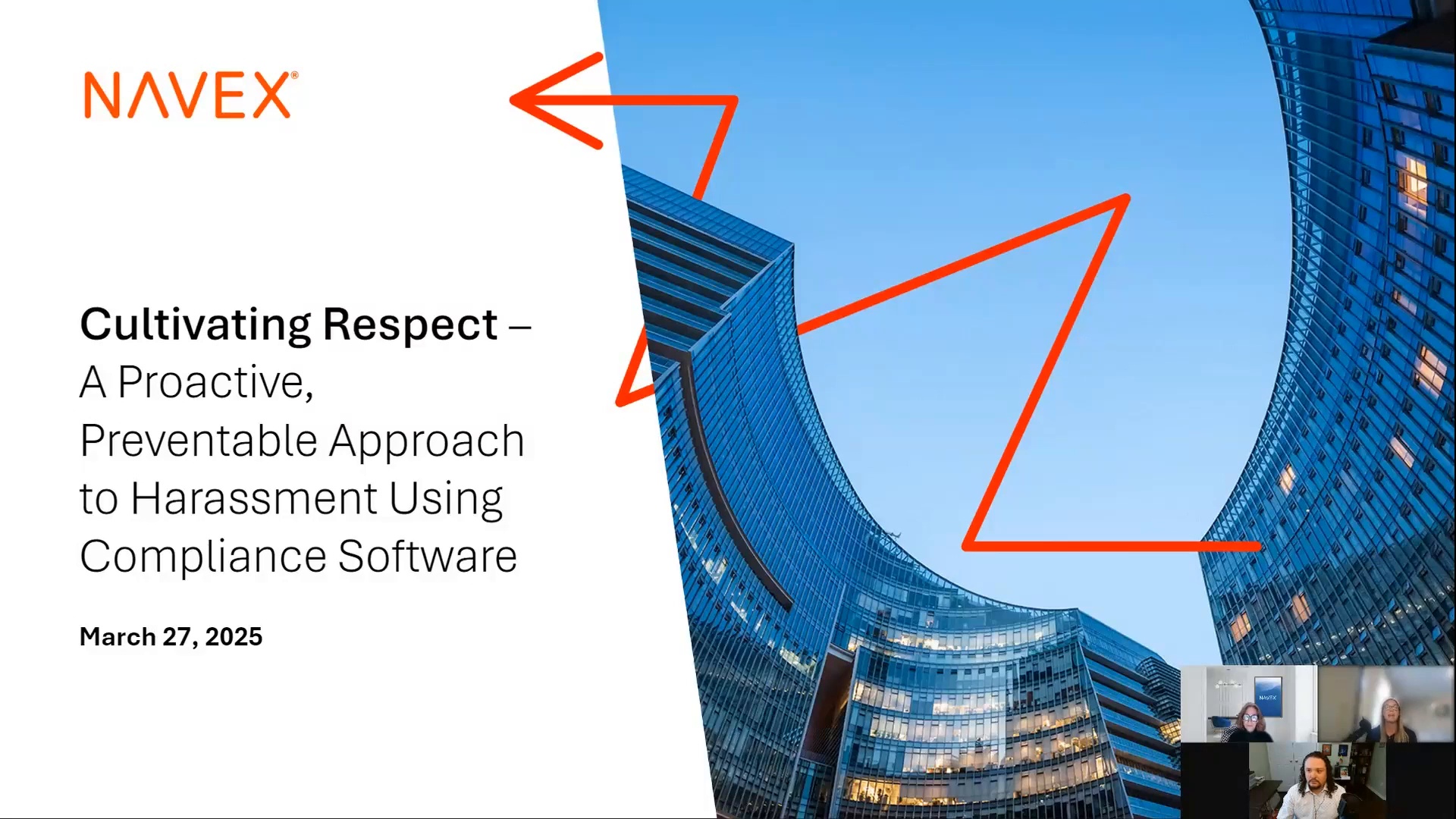Risk – it’s most detrimental when you don’t see it coming. Running any size business means anticipating and accepting some risks and establishing controls to mitigate others. Risk often originates from inside the business with people and process vulnerabilities, and outside the business, risk is influenced by regulatory and geopolitical changes.
So, let’s talk more about the ‘R’ in GRC. With risk visibility and well-defined strategies for mitigation as the end goal, the first step organizations need to take is to reduce (or ideally, eliminate) risk silos. We have yet to see an organization that doesn’t have siloed information or processes, so understand that first this will be a journey, and second that it cannot be achieved with manual processes.
Even now, many organizations attempt to manage risk and compliance manually. This includes everything from spreadsheets comprised of third-party vendor information, to emails sent to distribute policies and procedures. There are obvious pitfalls to this ad hoc strategy – inconsistent processes, communication breakdowns, and version control, just to name a few. So, what is the first step to address these issues?
Business value of mature risk programs
Mature risk programs have several things in common, one of which is a consolidated view of risks across the business.
A Governance, Risk and Compliance Information System (GRC-IS) allows important risk and compliance data to be aggregated in a central and visible location for all stakeholders. That is the ideal state and allows organizations to accelerate their risk and compliance management activities. A GRC-IS saves time and resources with automated audits, central policy and procedure management, risk assessments for third parties, and analytics for risk and compliance activities.
Often seen as a cost center, Compliance, Information Security and even Information Technology leaders can have their work cut out for them to prove the ROI and business value of proactively addressing risk and compliance vulnerabilities. One of the most effective ways to prove the value of a centralized GRC-IS is to get multiple stakeholders involved to demonstrate where value is added outside of the Compliance function. Think of all the areas governance, risk and compliance converge and impact the business:
- Business continuity planning
- Third-party and vendor risk
- Supply chains
- IT, cybersecurity, and data privacy
- Environmental, social and governance (ESG)
- Compliance with changing regulatory requirements
All of the above GRC considerations touch multiple areas of the business but are frequently siloed to the respective “risk owner”. But when CCOs, CISOs, CIOs, CTOs, and other stakeholders work together to address risk, the full picture can be better communicated and more consistently addressed with process and technology improvements. Simply put, it’s a lot easier to prove the business value of a GRC-IS when multiple stakeholders are bought in.
Risk management challenges and innovative solutions
Perhaps the primary challenge that GRC stakeholders face is the Sisyphean-like task of doing more with fewer resources. Not only that, but the limited resource challenge is usually combined with the information and risk silo issue faced by most organizations. Overcoming these challenges requires a unified approach with the relevant stakeholders to bring forth solutions to solve these challenges.
Luckily, positive technology disruptions such as artificial intelligence (AI) and machine learning (ML) are entering the marketplace as vendors are responding to the increased need for process automation. According to Forrester’s The Governance, Risk, And Compliance Platforms Landscape, Q2 2023 report, more than one-third of GRC vendors are investing in AI, ML and process automation to improve functionality in the GRC management space.
So, what does this all mean? For starters, it is safe to say that a fully AI-enabled and automated GRC-IS may not be here yet, but it is certainly on the horizon. Second, and more importantly – while more innovative capabilities are still being engineered by leaders in the GRC space, there are still massive opportunities for GRC to improve with a holistic risk management platform, such as the NAVEX One GRC-IS.
Benefits of a unified GRC approach
Unifying governance, risk and compliance comes with several top-line benefits. Organizations that embrace a holistic approach see stronger corporate cultures that prioritize integrity, comprehensive views of risk and regulatory requirements, and perhaps best of all, they are able to proactively address and mitigate risk.
Organizations that choose not to prioritize R&C efforts, or simply ignore regulatory requirements continue to face heavy fines resulting from increased regulatory enforcement. Compliance-related stories about historic payouts to whistleblowers, hefty fines for sanctions violations, and disgorgement of profits due to corrupt behavior are in the news daily. A major benefit to a mature GRC program is to avoid those consequences and protect the reputation of the business. While Risk and Compliance departments are often seen as a “cost center”, there is ample opportunity to change the narrative to speak to the benefits of proactive risk management and how it protects the business in the long term.
But don’t just take it from us – NAVEX is thrilled to host guest speaker Cody Scott from Forrester who will speak about the benefits of implementing a robust risk management program. Join us on June 20, 2023, for the webinar, “Risk and Process Management Framework: Lessons Learned in Getting Started – Featuring Forrester” to learn more about:
- Benefits and key objectives of implementing a risk program
- Common challenges faced when starting a risk program and tactics for getting started
- How to collaborate with C-Suite stakeholders for better risk management
- How to create a holistic view of risk across the organization
- Tips for CISOs, CTOs and CIOs looking to start building their own integrated risk program

